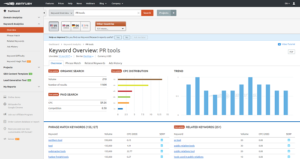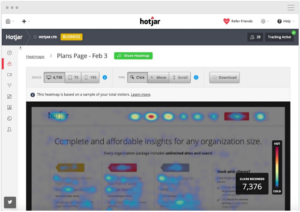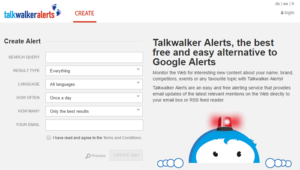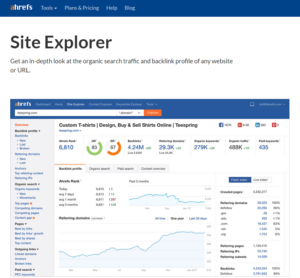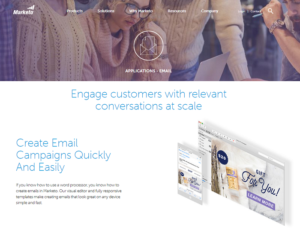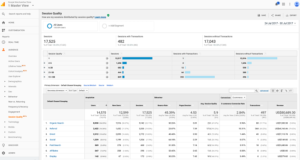9 of the Best Marketing Tools for Your MarTech Stack
Are you overwhelmed when trying to choose the best marketing tools for your digital marketing process?
It feels like there’s a new tool introduced every day, many of which have overlapping functions. Should you explode your budget and buy them all just in case, or stick with your existing stack, and risk missing out on new technology that could improve your marketing strategy?
Don’t panic if you don’t have a MarTech stack in place – you probably have, it’s just not named as such. A MarTech stack is simply a way to organize your marketing tools and understand how they work together – your teams can then work side-by-side and share all the functionality and insights available.
Building Your Own MarTech Stack
You may not realize it, but you’ve already got a MarTech stack. It may be seen as a just a box of marketing tools, but it’s actually one tool made up of many.
Before you start handing over cash for tools, establish what you already have and how they’re working together. Then test, and test again, and then you can consider spending.
To help with this, here is a listing of nine marketing tools we use at TalkWalker to help keep us focused, efficient, and in touch.
Each serves a distinct, defined purpose – and they may help you too. Here are some of the key components of our MarTech stack.
1. SEMrush
After a stroll around your thesaurus, a few last-minute tweaks, and a cracking image, your blog post is ready. Publish and fingers crossed? Well, that’s never gonna work, there’s way too much competition out there to ignore SEO.
To optimize your content, you need one of the best keyword research tools out there – SEMrush. You’ll be able to analyze rankings, ad copy, and backlink profiles. Plus, you can track your competitors.
SEMrush analyzes your entire SEO strategy and delivers insights on how to drive more traffic to your site.
2. Hotjar
This is one of my favorite marketing tools – I get lost in it and don’t want to leave.
Hotjar reveals how web and mobile users behave when visiting your website – meaning you can see what they’re looking at, exactly. Analysts, web developers, digital marketers and UI developers all use Hotjar to optimize the conversion and usability rate of their website.
The visual heatmap tool shows how users are interacting with your site – you can see whether they’re struggling with any aspects on a page, the specific areas they’re spending time on, where they’re clicking, etc. Revealing hot areas give you the opportunity to improve and optimize your conversion rate.
Features include:
- Visitor Recordings monitor users’ behavior on each page.
- Heatmaps track where users scroll past or click.
- Conversion Funnels identify the pages that cause visitors to leave so you can improve bounce rate.
- Form Analytics monitor where users are dropping off and not completing your forms.
- Feedback Polls – add a polling box to high-traffic pages for instant comments.
3. Talkwalker Alerts
If – and it happens to us all – someone posts something negative about your brand, you need to find and react quickly to reduce possible damage. Talkwalker Alerts is quick to set up, easy to use – and free.
Set up your specific search terms, and you’ll start to receive email alerts of the latest mentions on the web, and all the breaking news stories. Alerts show a description alongside the links to the news source.
4. Ahrefs
Ahrefs was originally purely for backlink analysis, but now it includes SEO auditing, content marketing analysis, link prospecting, ranking positions, and keyword research.
As marketing tools go, it’s powerful.
In the dashboard, you can set up projects to monitor domains for changes in metrics, including domain health, accessibility, crawlability, meta data violations, gained and lost referring domains, URL rating, backlinks, and how many keywords your domain’s ranking for.
Email alerts will show you all the backlinks you’ve won and lost, along with rankings. You’ll also receive a crawl report showing response codes, any duplicated or thin content, title tags, H! and H2 tags, internal/external links, and meta descriptions.
5. Marketo
We spent a long-time testing Marketo, ensuring it would fit into our existing MarTech stack, our goals, and our team. It ticked all the boxes and we haven’t looked back.
Marketo is one of the most important marketing tools in your MarTech stack:
- User-friendly – It’s UI may not be that attractive, but it’s easy and intuitive to use.
- Easy to integrate with Salesforce – Syncing can be slow but these two marketing tools work hand-in-hand.
- Fast to set up – It’s easy to implement and you’ll be up and running in no time.
- Support & community led – Advice on campaigns and technical issues is always available.
6. Google Analytics
Google Analytics tracks and identifies data on your website – traffic, bounce rate, conversions, and more. Google offers it as a free service that identifies insights about how users find and use your website. If you own a website, for business or pleasure, Google Analytics is essential.
7. Hootsuite
If you’re struggling to keep on top of all your social accounts across Twitter, Facebook, LinkedIn, Instagram, YouTube, Google+, etc. – you need Hootsuite. It’s a social media management tool in the form of a dashboard, where multiple team members can schedule tweets, engage with users, create content libraries, and track analytics. Additional integrations in its app directory include Reddit, Tumbler, and Marketo.
Marketing tools that manage your social media accounts will save you time and stress – while they also ensure your team are all on the same page.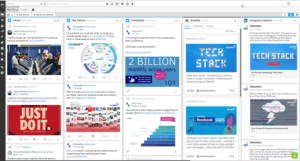
8. Slack
Slack stands for ‘Searchable Log of All Conversation and Knowledge’ – it’s where work happens.
We use it every day in the marketing team for discussing projects, sharing industry news, and yes, organizing coffee breaks (marketing and caffeine go hand-in-hand).
It’s a messaging app with features that allow you to integrate other marketing tools such as Trello, Gmail, Giphy, and more. Set up groups to include your entire team, ones that are project-led, and one-to-one chats.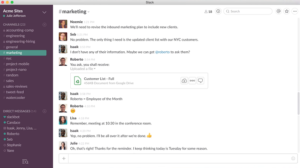
9. Adobe Creative Suite
Our designer, Laura, swears by the Adobe CS. It plays a part in all of our projects – image creation, video editing, designing hard-copy brochures, reports, and logos, screen casts, corporate stationery, and event roll-ups.
What We’ve Learned
- Testing is the only way you’ll know if a marketing tool is going to fit with your stack and your team
- Sales guys have different goals to you – don’t always believe what they say
- Allow time for training on new marketing tools, or you’ll have wasted your money
- It has to fit and work with the other marketing tools in your MarTech stack
Hopefully, these notes will help you decide which tools are best for your digital marketing process.
Article was written by Meg Carpenter for Social Media Today
0


